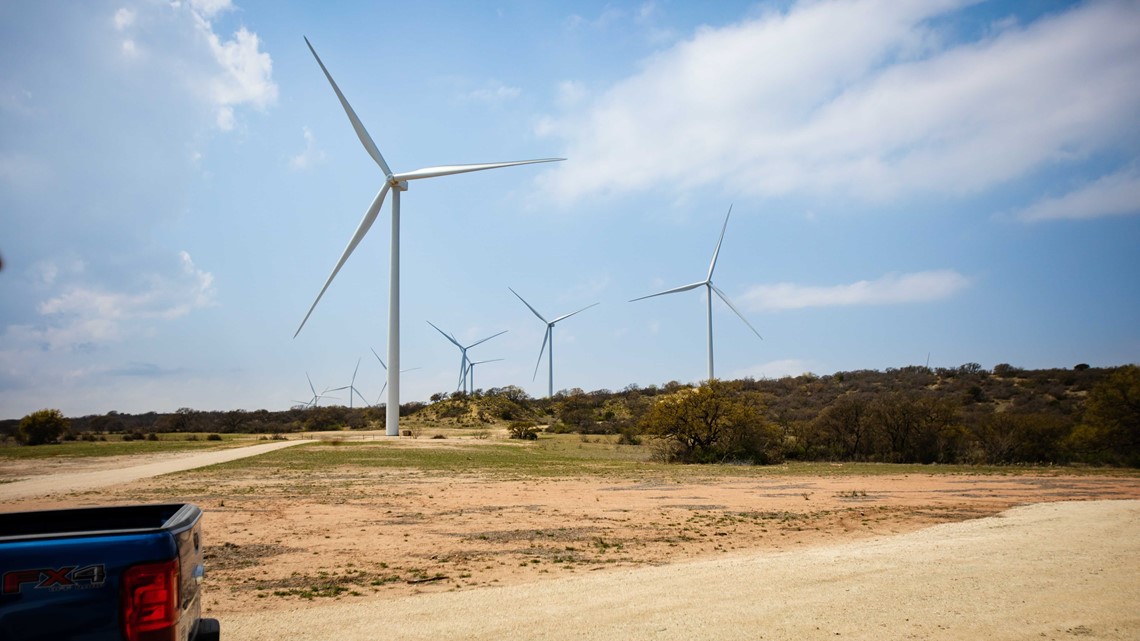BRADY, Texas — After the ice storms, there seems to be an increased interest in energy production, particularly how Texas makes its energy for its grid.
When driving out in the country, these might be common sights – dirt roads, cows and wind turbines.
You know those things that we see moving slowly in the distance, but what do they do? How do they work? And how does it turn that spinning into electricity that we use?
"It's creating energy, electric energy, in this case from the wind, and it's a technology that has existed for millennia," said Michael Rucker, the CEO of Scout Energy.
Rucker's one of the people who can help explain this from a bigger perspective. But what about up close? We'll rely on Orlando Carrillo. He's the facility manager for a wind farm in Brady: the Heart of Texas Wind Project.
"The Heart of Texas is approximately 10,762 acres. We have a total of 18 participating landowners," he said.
It's big and has 64 wind turbines.


"This is what they call a DTA." he said, demonstrating the down tower assembly at the bottom of the turbine. "This is where all your controls, all your breakers are at. All your controls are in this particular cabinet here."
It's about 300 feet up from the bottom of the tower. The blades spin outside, which turns a generator inside, creating electricity.
"Two-point-eight megawatts is what it is," Carillo said. "I'd say it has enough power to power up to two good-size cities, on an annual basis."
"They would generally at this production profile probably provide enough energy for an average of 15,000 to 17,000 homes," said Rucker.
All of that energy from all of these turbines then travels underground to a substation.
"Each one of those breakers represents a circuit. There are eight circuits at this site," explained Carillo.
It's the one point where the power leaves the wind farm.
"It essentially goes right through here from every turbine on this site, goes over to them, goes over to LCRA and to the grid for everyone here in Texas," said Carillo.
All the energy goes to more than 1 million homes. If you ask Rucker, wind energy is vital to the Texas electricity grid.
"This particular site in Texas has a net capacity factor, which is how we measure efficiency, of more than 50%. When I started in the industry, 25 years ago, 30% would have been a good site, 30% to 35%," he said. "What that's meant is wind power has become the lowest-cost energy source on the grid in the U.S. today."
This is of course just one of the sources that Texas gets its energy from. Add in coal, solar, natural gas and even nuclear, and you get the full Texas grid.
"It's important too that Texas does and continues to have a flexible energy mix, which in times when wind energy isn't generating at its peak, it's most likely sunny, and then you'll see solar," said Rucker. "The state can always rely on its traditional natural gas and other forms of energy generation in those times too."
So next time you're passing by what seems small in the distance, you might have a better understanding of how these towering turbines work.
We also asked about the ice storm that hit these farms hard. The winterization package for these turbines only helps with cold temperatures – ice like Texas saw in February shuts it down either way.
PEOPLE ARE ALSO READING:

